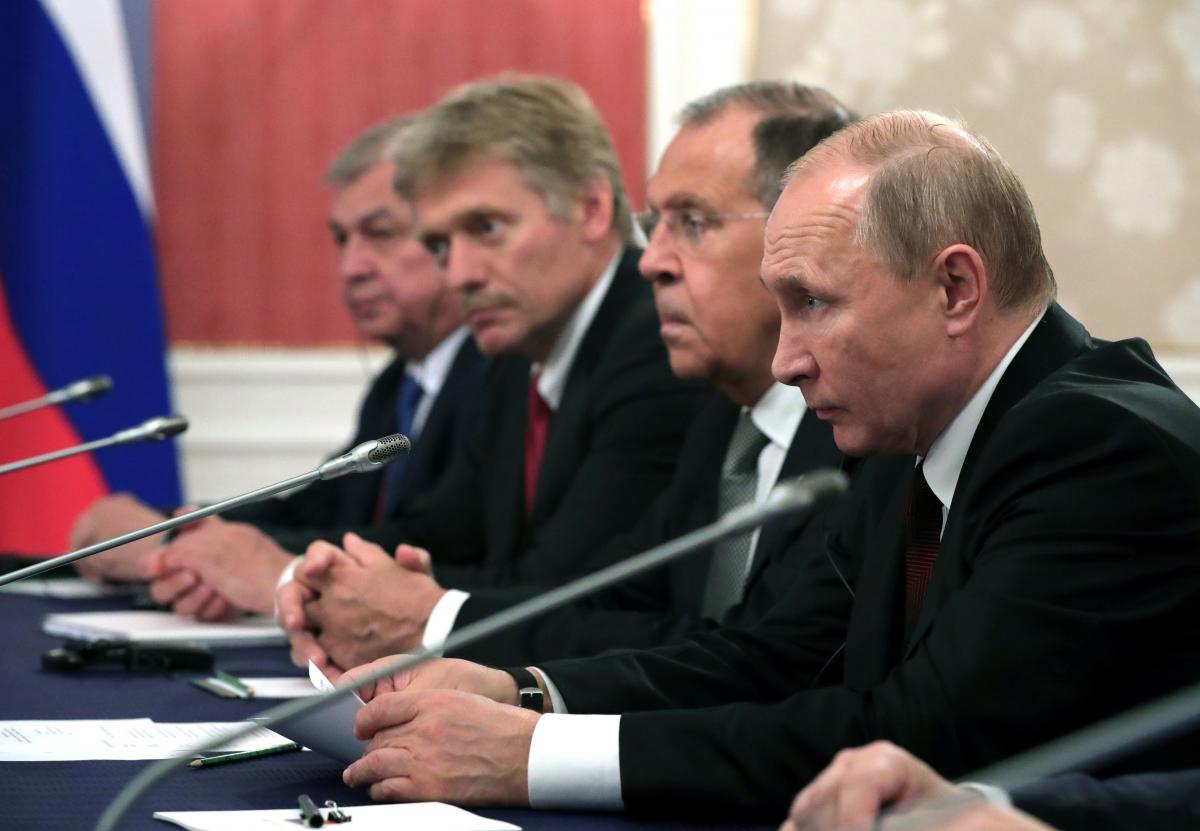
"Brother" at the gate. Will Putin move for a full-scale invasion of Ukraine?
It's not the first year that the Kremlin has been declaring the expansion of the "geography of challenges" for Russia, including from the collective West. And Russia intends to confront these "challenges", as is almost always the case, with the help of its army and weapons. UNIAN was figuring out whether Ukraine would become an arena for such confrontation, given the high risks that are out there.
The G7 Summit, NATO Summit, and EU-U.S. Summit are events in which U.S. President Joe Biden will take part during his first European tour. After negotiations with the allies, a meeting with Russian President Vladimir Putin is also scheduled. They will have a lot to discuss. Many of those issues are unpleasant for Russia. And it can't be ruled out that one of the "arguments" the Kremlin will traditionally use is its favorite trick – saber rattling. Moreover, a huge number of Russian forces have already been pulled to the borders of Ukraine.
Threat on five fronts
The coordinator of the Information Resistance OSINT group, military expert Kostiantyn Mashovets notes that Russia is building up its military potential in the western, southern, and central military districts. In particular, the deployment of forces in southwest Russia is directed specifically against Ukraine.
Today, the expert says, Russia has created military groupings of an operational-tactical scale in five main areas:
- Chernihiv and Sumy regions;
- Kharkiv region;
- Donbas;
- Azov littoral; and
- Crimea.
And, judging by the massing of troops, the Information Resistance group believes that now the most important direction for Russia is the southern one. These are Odesa, Mykolaiv, Kherson regions, and also partly Zaporizhia region. In addition, there is a possible threat in the Chernihiv direction. According to Kostiantyn Mashovets, this is due to the fact that this is the shortest path to the capital of Ukraine, Kyiv.
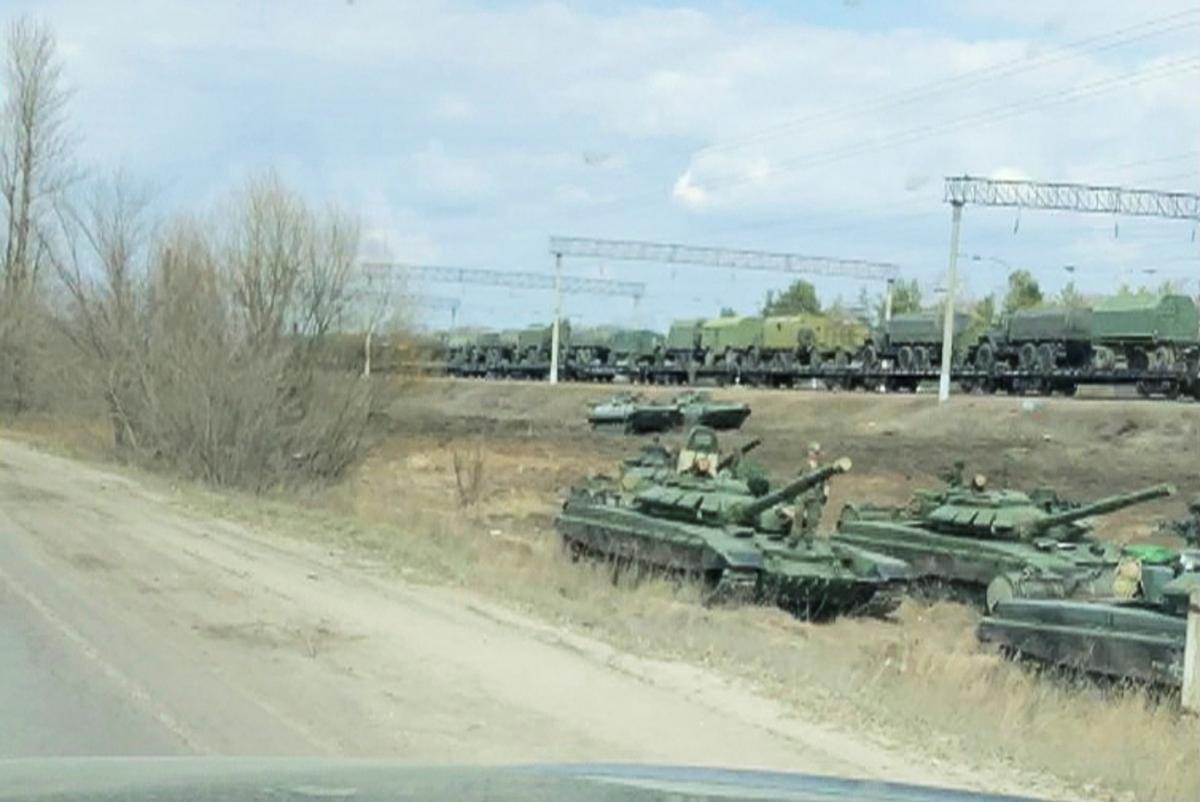
Experts believe that today the total number of forces near the border with Ukraine – along the border from Chernihiv region to Crimea – ranges from 100,000 to 120,000. In addition, in Crimea, after the peninsula was grabbed by Russia, the Kremlin has deployed an inter-service grouping of up to 30,000 forces.
The seriousness of the Kremlin's intentions, according to Kostiantyn Mashovets, is evidenced by the sufficient number of high-precision missile carriers, Kalibr cruise missiles, operational-tactical missile systems, along with the significant group of ground forces amassed in the south. The capabilities of the Black Sea Fleet have also been boosted, several highly mobile formations have been deployed, including the 7th Airborne Assault Brigade and individual units of the Airborne Forces and the Marine Corps.
Large-scale preparations
As noted by Deputy Chief of the General Staff of the Armed Forces of Ukraine (2006-2010), Lieutenant General Ihor Romanenko, this number of Russian forces is not enough to go for an offensive. According to him, for a large-scale war against Ukraine, Russia needs about 240,000 servicemen. That is, the groupings need to more than double. But, unfortunately, Russia can do this at any moment, and rather quickly.
"The General Staff of the Russian Federation has completed the relevant operations; they've done their calculations, worked out support and logistics. The question now lies in a military-political perspective. In terms of the number of forces that remained at the borders, it is about 100,000. With these forces, it is possible to start medium-level localized hostilities. To this end, they have enough troops, forces, means, weapons, and support plans," he said.
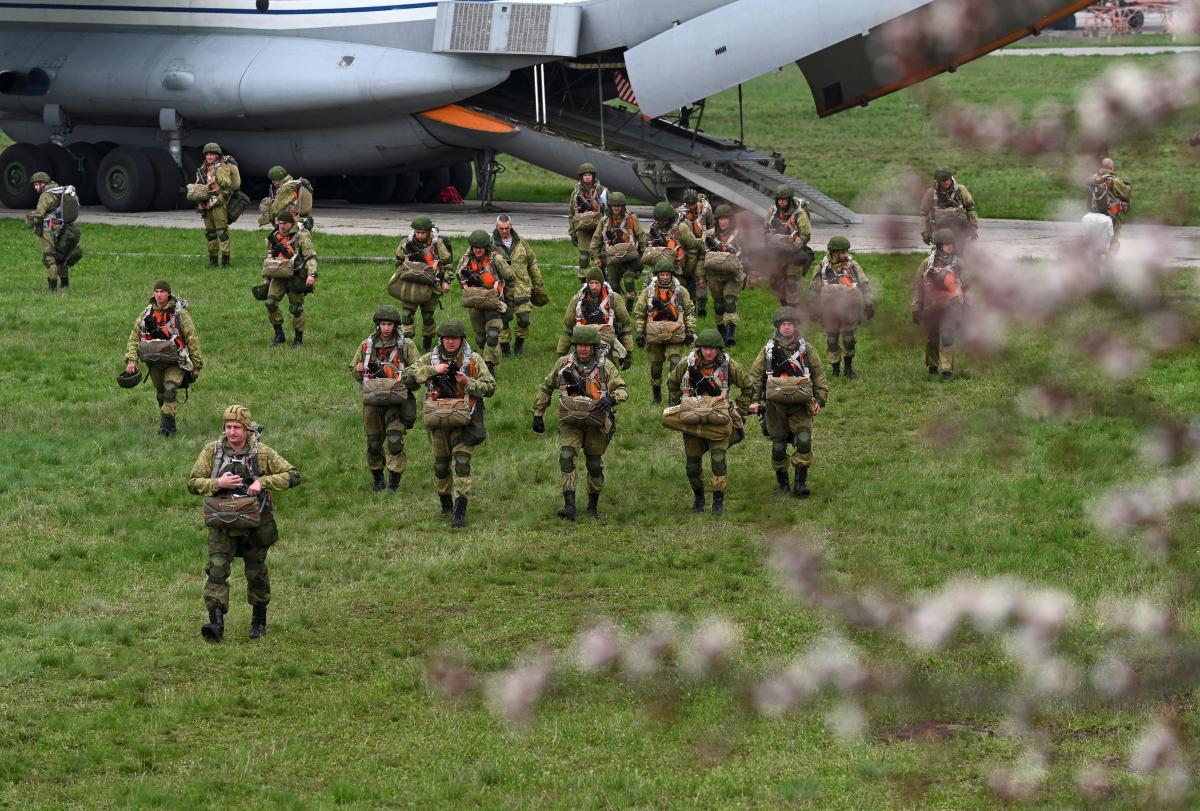
In other words, Russia, under the guise of various "exercises", has already deployed its military on the borders and in the temporarily occupied territories of Ukraine. And this can be considered the first stage in the deployment of forces.
Romanenko notes that at the second stage, they could transfer the required number of forces in a week, using, among other things, the Debaltseve railway junction and military transport aircraft. To this end, they can use the landing strips of the destroyed Donetsk and Luhansk airports – the sites of fierce battles in the early years of war.
The Lieutenant General recalls that at the latest "exercises" in Crimea, Russia was precisely practicing massive landing of units.
"Belarusian card"
Another point that Ihor Romanenko draws attention to is the factor of Belarus. In his opinion, the Russian Federation has been preparing this "military foothold" for three to five years already – they actively conduct joint exercises, deploy troops, including air defense forces, and leave their forces on the territory of the Republic, which is now headed by the rogue Alexander Lukashenko.
Officially, today there are two military facilities under Russian command in Belarus – the 43rd Zonal Communications Center of the Navy in Minsk region and the 474th Separate Radio Engineering center in Brest region. It is curious that the basis for such "cooperation" laid down in intergovernmental agreements between the Russian Federation and the Republic of Belarus could have been terminated last summer (they were just about to expire and, having notified the other side, Belarus could have terminated these agreements). But then, ahead of the presidential elections in Belarus (everyone remembers how they ended and how they are still haunting the country), Lukashenko did not dare do it. Previously, however, he had put up resistance in every possible way on the issue of expanding Russian presence in Belarus, especially when the Kremlin pushed for the need to control another site – the airbase outside Bobruisk.
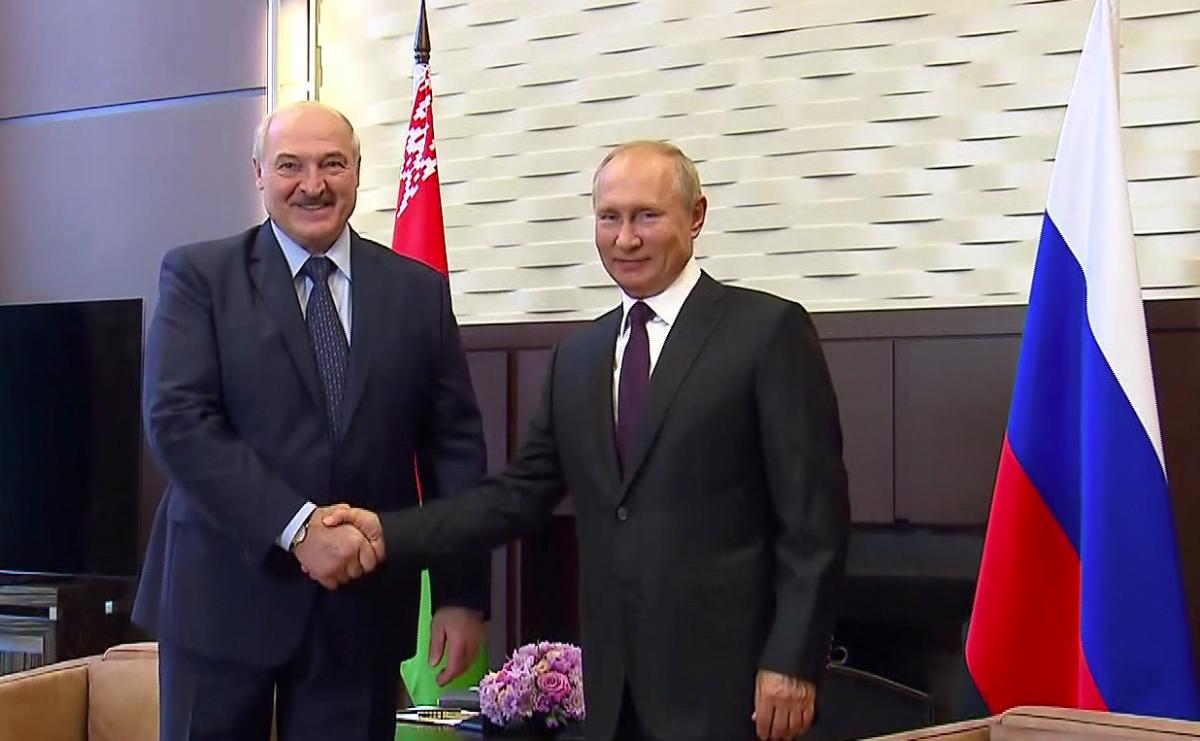
"Now the Russians will not particularly ask Belarusians any permissions – they will just go there. Moreover, they will put pressure on them so that they take part in these possible hostilities if necessary, under the "pretext" of the alleged fight against 'terrorists.' We see that Lukashenko is already in agony as a dictator amid the latest forced landing of a passenger plane. In this condition, he is capable of anything," said Lieutenant General Ihor Romanenko.
Strike plans have already been worked out
Thus, Russia has prepared in a major way. And, quite likely, the Kremlin has worked out a possible double blow that could practically cut Ukraine in half.
"Along the perimeter – in Sumy and Kharkiv regions, Donbas, and the Azov littoral – there is a powerful grouping of Russian troops, which ties up a significant part of the Ukrainian troops, and the main strikes are delivered in Chernihiv region and from the south," explains Kostiantyn Mashovets.
According to him, "if Belarus is annexed in full," a powerful grouping of troops will be created under the guise of the Russian-Belarusian exercises West 2021 on the territory of another Ukraine's northern neighbor.
"Therefore, a cleaving strike may be inflicted, which will cut off the eastern and southern parts of Ukraine from the central and western ones. Such a scenario can be viewed strategically as the most likely one," Mashovets said.
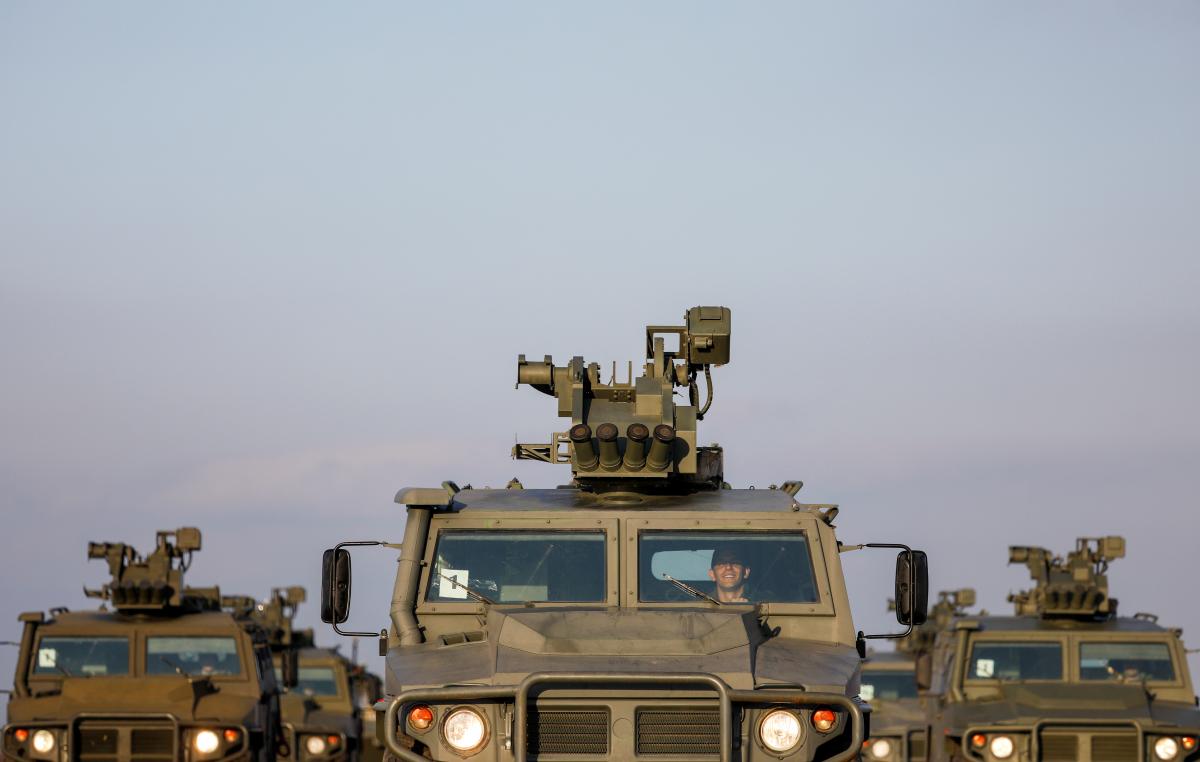
"Theoretically, we can say that they [the armed forces of the Russian Federation] at short notice can start a large-scale war with Ukraine. But aggression at a medium intensity level is more likely to exert pressure on the Ukrainian leadership," adds Ihor Romanenko, who is also convinced that Russia can use the West 2021 exercises as an excuse for a concealed shift to real hostilities.
However, according to the expert, the Kremlin doesn't want additional sanctions. Putin understands that while it is cheaper to achieve goals by pressure and economic impact. But if that doesn't work, military force can be used directly.
"Most likely, Putin will decide on this issue after having a summit with Biden and his possible summit with Zelensky," the general is positive.
But all this doesn't mean that Ukraine is in no need to prepare for the worst.
Forewarned is forearmed
"While we do have air defense and are building up efforts in this regard, we do not yet have anti-missile defense. Cruise missiles can still be countered, but defending against ballistic missiles would be a serious issue," said Lieutenant General Ihor Romanenko.
He recalls that the country's leadership is working to ensure that Ukraine receives American Patriot anti-aircraft missile systems, but this takes time and plenty of money.
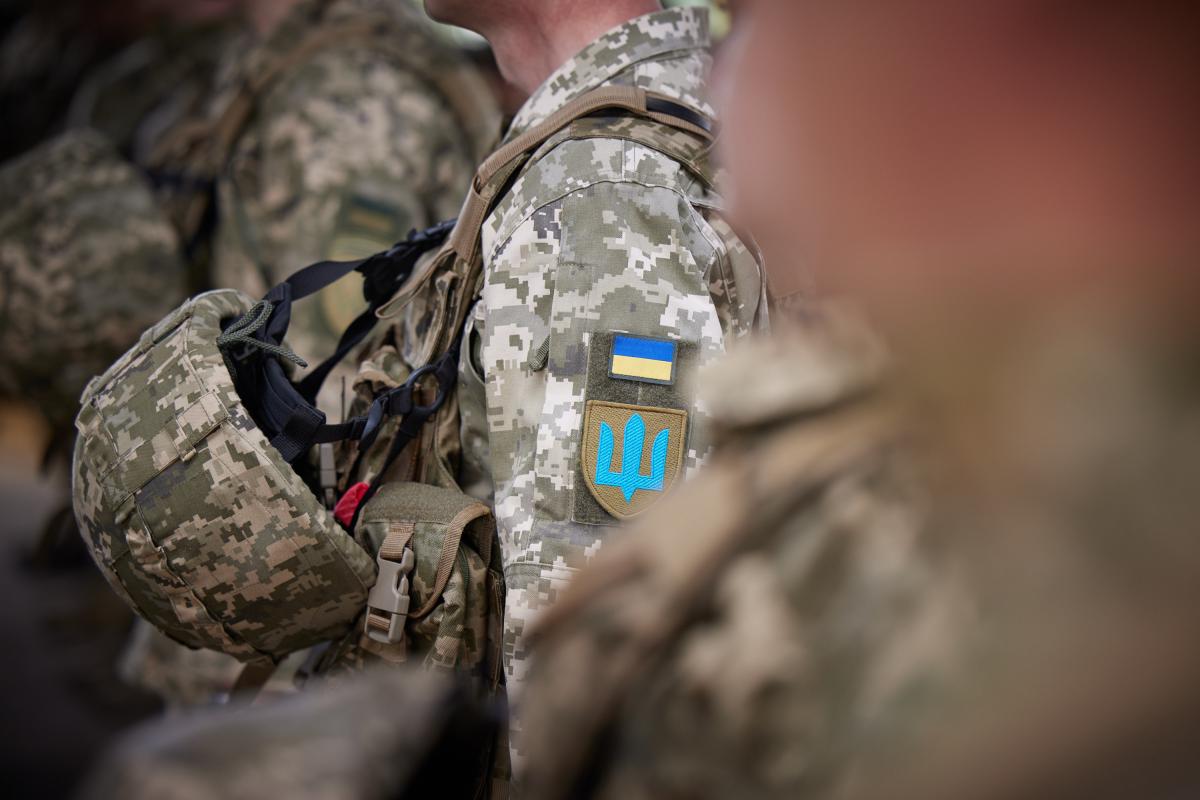
At the same time, according to Kostiantyn Mashovets, we should carefully monitor "the location, deployment sites, and condition of high-precision remote and air strike weapon carriers." "I mean aviation, missile carriers, including sea-based ones as part of the Black Sea Fleet and the Caspian Flotilla, as well as electronic warfare and electronic intelligence tools, which our enemy has been using against Ukraine," the expert urges.
In addition, based on modern concepts of the use of force, one needs to pay attention to certain types of weapons that will most likely be used in any operation or military action toward a full-scale invasion. In particular, according to Mashovets, it won't be superfluous to track what Russia's special operation forces and various special units are doing, because if a decision is made to pursue aggression in a hybrid format, these units will be at the forefront of Russia's hybrid efforts.
In turn, General of the Armed Forces of Ukraine, former Deputy Secretary of the National Security and Defense Council Serhiy Kryvonos notes that by the fall of 2021 we should already have a clear action plan. It is not worth reassuring ourselves that following meetings with Europeans and Americans, Russians will suddenly become kinder to us.
"The escalation at the Ukrainian borders could start this fall. And we need to closely get into developing our country and our defense," he said.
"The president must realize that Russia is waging war toward the complete destruction of Ukraine, as an independent state, and Ukrainians – as a nation. There is a major fight ahead, we need to unite and make our country strong as quickly as possible," the retired general urges.
According to him, modern wars are not about quantity, they are about quality and ability to use weapons, including high-precision arms, which the Russian Federation has in abundance. But apart from Ukrainians themselves, who should rally around the Russian threat, hardly anyone will help us.
Kostiantyn Honcharov, Tetiana Urbanskaya

